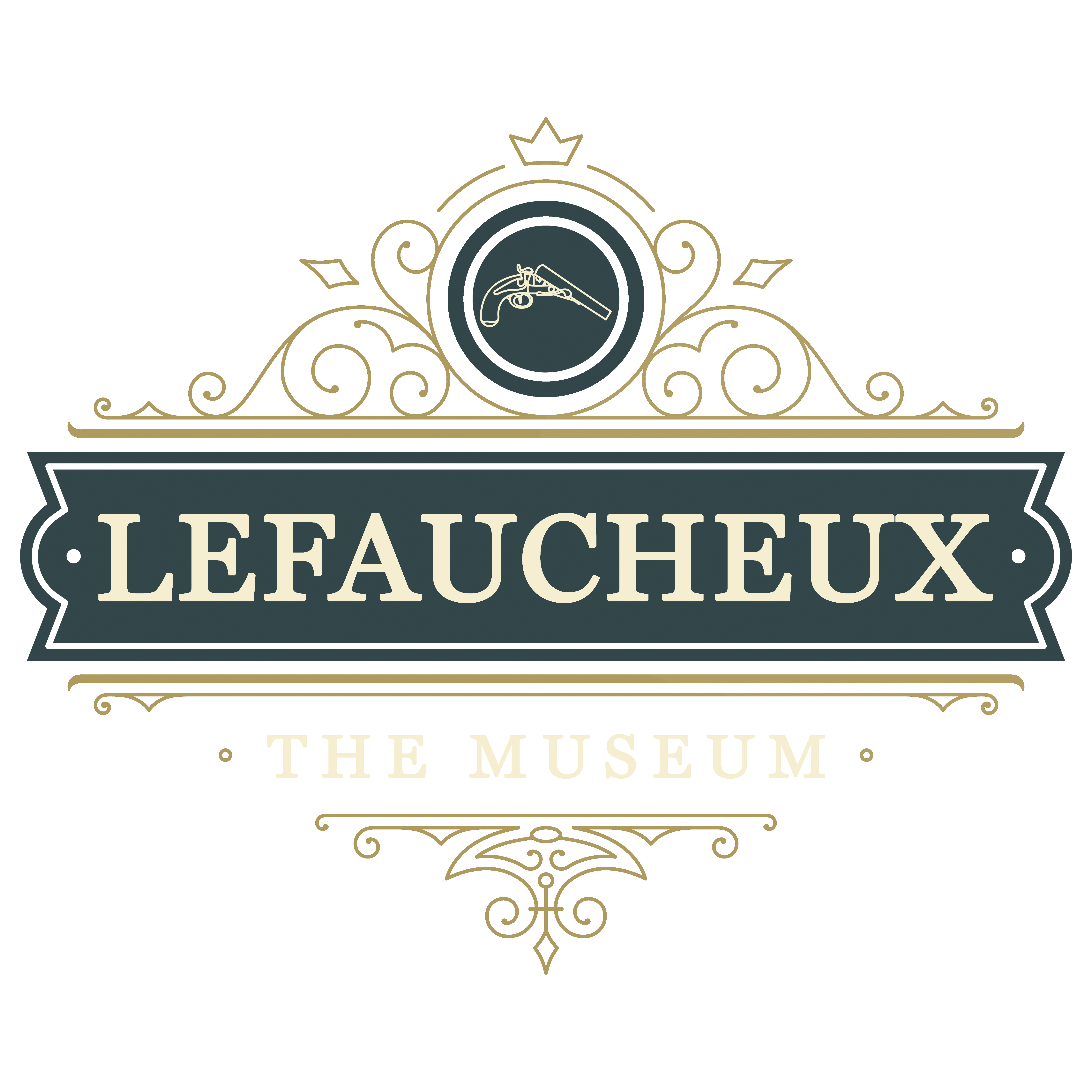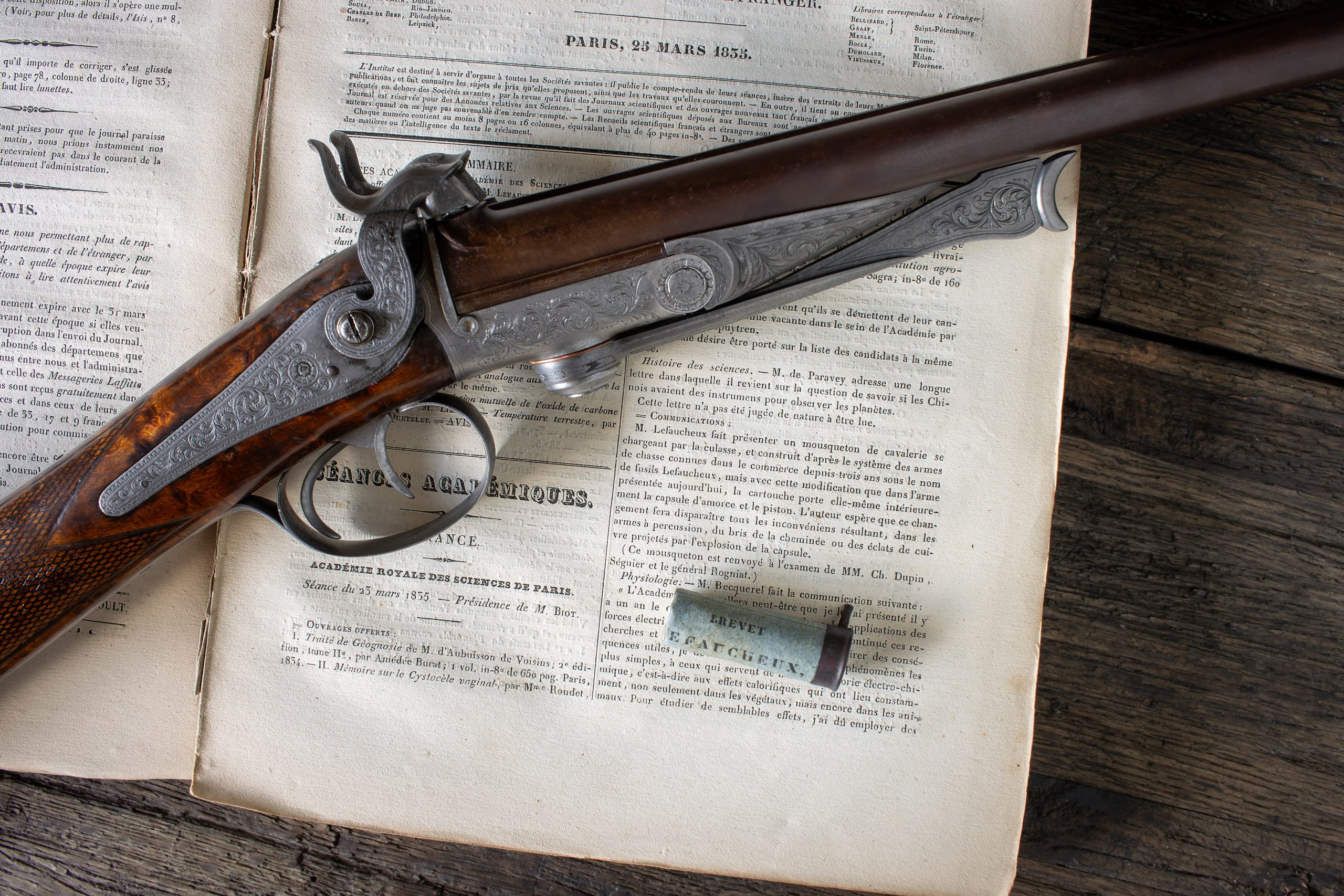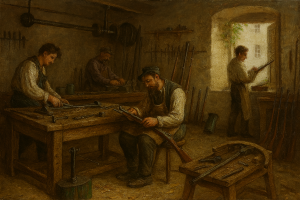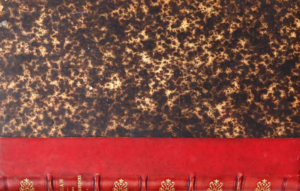Context: Casimir Lefaucheux’s Breech-Loading Innovations
Casimir Lefaucheux was a pioneering French gunsmith of the early 19th century, renowned for advancing breech-loading firearm design. Having apprenticed under Jean Samuel Pauly who introduced integrated cartridge firearms in 1812, Lefaucheux built upon that legacy. By the early 1830s, he was marketing fusils Lefaucheux, drop-barrel sporting guns that used pre-loaded paper cartridges, albeit still ignited by separate percussion caps. These early breech-loaders offered faster loading than muzzle-loaders, but they retained the percussion lock’s flaws: external nipples (“cheminées”) could break under firing, and copper cap fragments often flew off, risking injury. Lefaucheux recognized that truly self-contained ammunition was needed to eliminate these hazards and further improve reliability.
The Patent of March 1835: A Cartridge with Integrated Primer and Pin
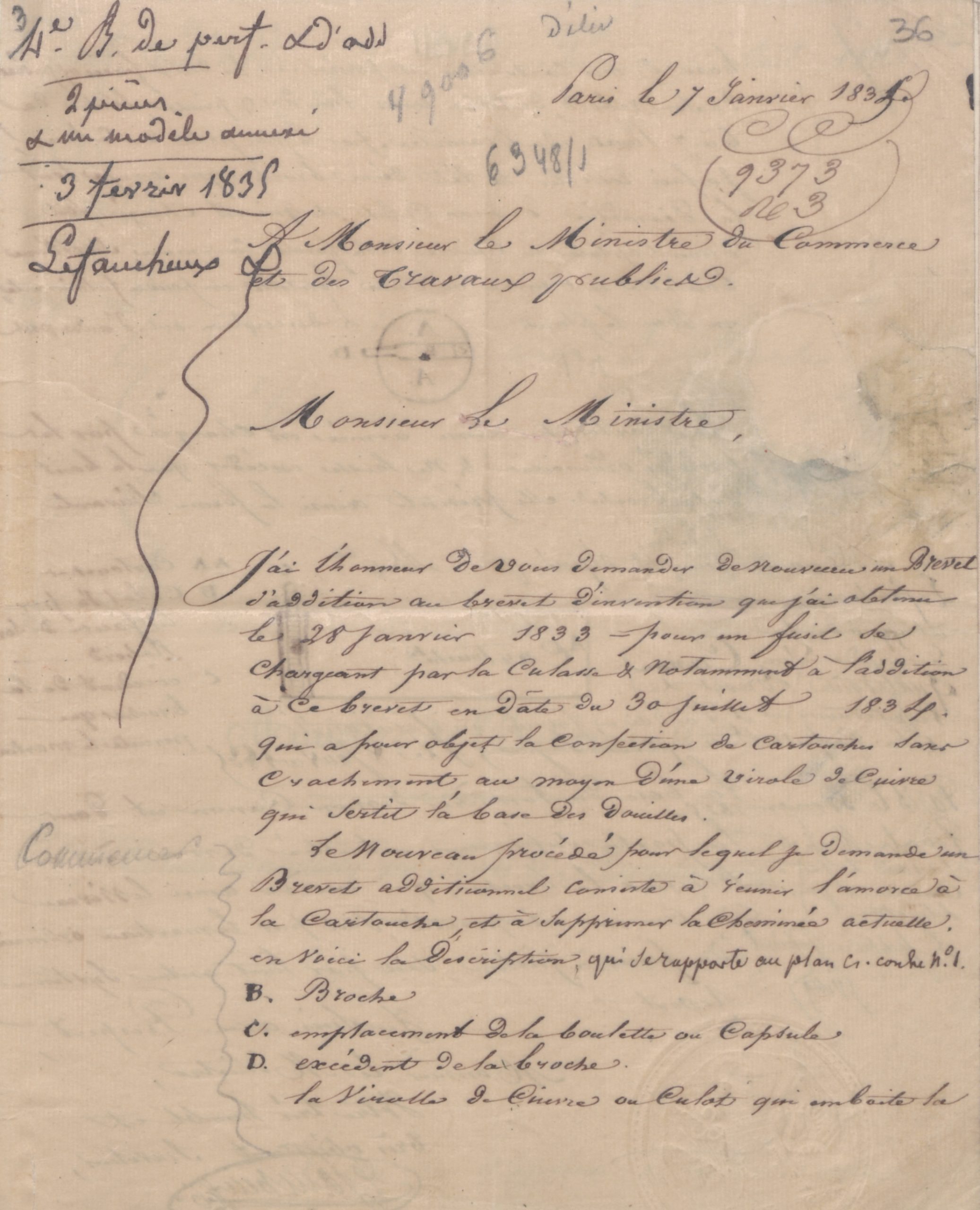

In early 1835, Casimir Lefaucheux secured a patent addition (brevet de perfectionnement) for a crucial improvement to his breech-loading system. This patent was filed on January 8, 1835 and granted by March 31, 1835. It introduced the pinfire cartridge concept. Lefaucheux’s improved cartridge was a self-contained unit combining bullet, powder, and primer in one. Notably, the primer (fulminate cap) was built inside the base of the cartridge, eliminating the need for a separate percussion cap. A small metal pin or “piston” protruded perpendicularly from the cartridge base, and when struck by the gun’s hammer it drove into the internal cap to ignite the charge. This was a revolutionary design: each cartridge effectively carried its own igniter. Contemporary descriptions note the cartridge had shot, a cardboard powder tube, and a copper base incorporating the primer pellet; an assembly that ensured a tight gas seal and reliable ignition. By integrating the cap and anvil into the cartridge, Lefaucheux’s invention removed the troublesome external nipple and loose percussion cap from the equation. The French patent documents emphasize how this innovation sped up loading and firing, while improving safety and performance over traditional percussion arms. In short, Casimir Lefaucheux’s March 1835 patent addition marks the birth of the pinfire cartridge, one of the first practical self-contained ammunition systems in firearms history.
Presentation to the Société d’Encouragement (March 1835)
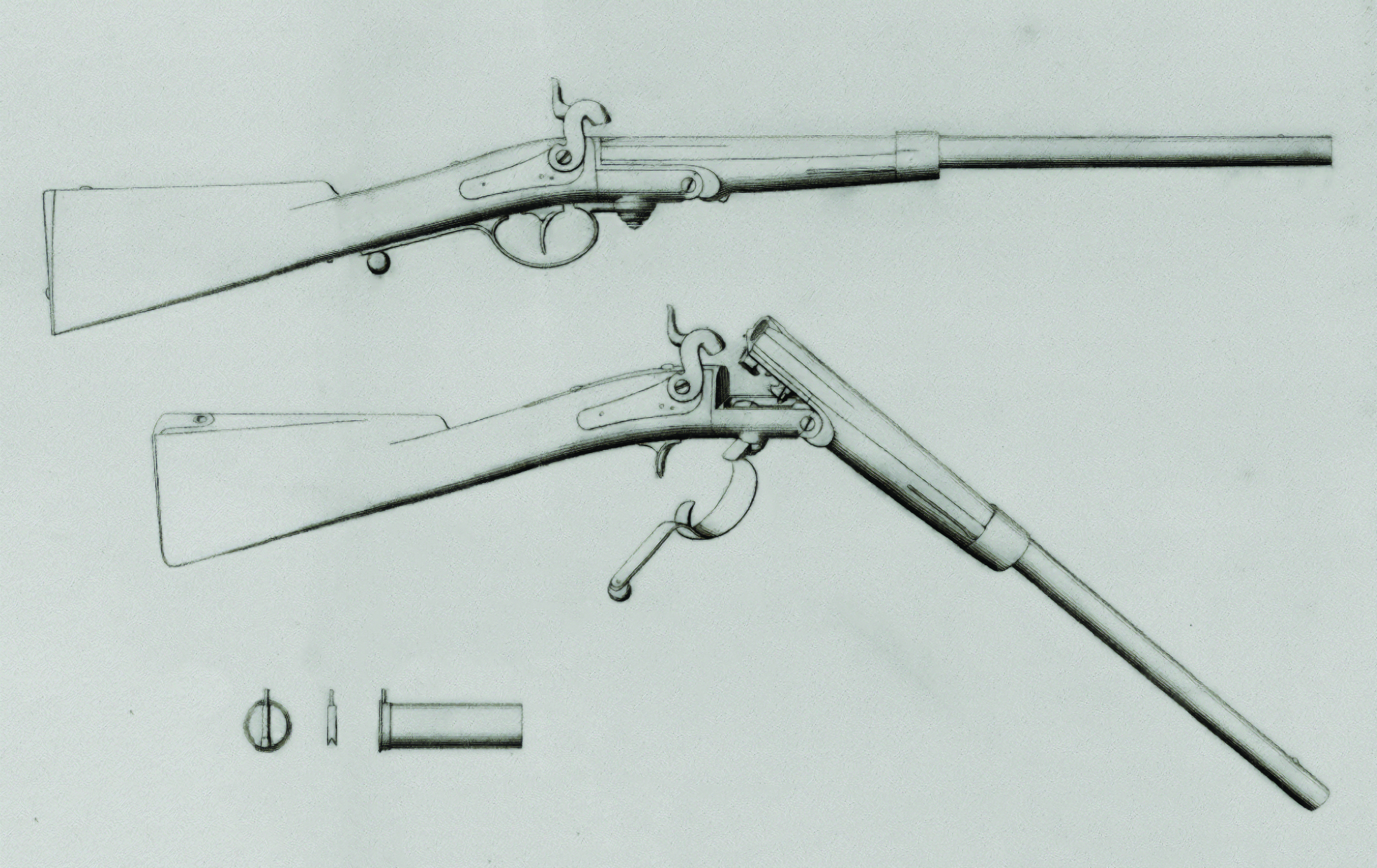
Lefaucheux was eager to demonstrate his new breech-loading system to the scientific and industrial community. On March 23, 1835, he presented a cavalry musketoon employing this innovation before the Société d’Encouragement pour l’Industrie Nationale in Paris. This carbine-length musket featured Lefaucheux’s drop-barrel breech and the new integrated-primer cartridges. As recorded in the Society’s bulletin, the weapon was based on Lefaucheux’s hunting guns “known in commerce for three years,” but now the cartridge itself internally carries the percussion cap and the piston. By enclosing the cap and firing pin (“piston”) within the cartridge, Lefaucheux aimed to “make all the inconveniences disappear” that plagued percussion firearms, namely the broken nipples and copper cap shards caused by external caps.
The Society’s Committee of Mechanical Arts, led by Baron Séguier, examined Lefaucheux’s musketoon in detail. In their report, they hailed this “important improvement of undeniable utility”, noting that “each cartridge bears its own primer and its chimney (nipple)” thanks to a special copper base design. The cartridge had a small iron rod fixed perpendicular in its base carrying a tiny fulminate cap on its lower end inside. When the breech was closed, this loaded cartridge’s pin fit into a notch in the barrel. Upon firing, the hammer struck the iron pin, detonating the internal cap. This arrangement, the examiners observed, would greatly reduce misfires compared to a conventional cap on an external nipple. After firing, the spent cartridge (along with any burning debris) could be quickly removed, and a fresh one inserted just as easily in darkness as in daylight. The committee was impressed that Lefaucheux achieved this without altering the old lock mechanism of the musket. By simply changing the form of the cartridge, his design converted a standard percussion breech-loader into a much safer and more efficient weapon. Baron Séguier’s report in the Bulletin de la Société d’Encouragement recounts how comparative shooting trials were conducted on the Champs-Élysées, where military officers tested Lefaucheux’s gun against a standard percussion rifle. The results confirmed the advantages of Lefaucheux’s system in terms of gas seal and penetration, validating the new cartridge’s performance. The Society’s evaluation was glowing. Several prominent generals and colonels expressed “great satisfaction” after trying the weapon and foresaw that this innovation could lead to the adoption of breech-loading arms by the military.
L’Institut Journal, 25 March 1835 – First Public Notice
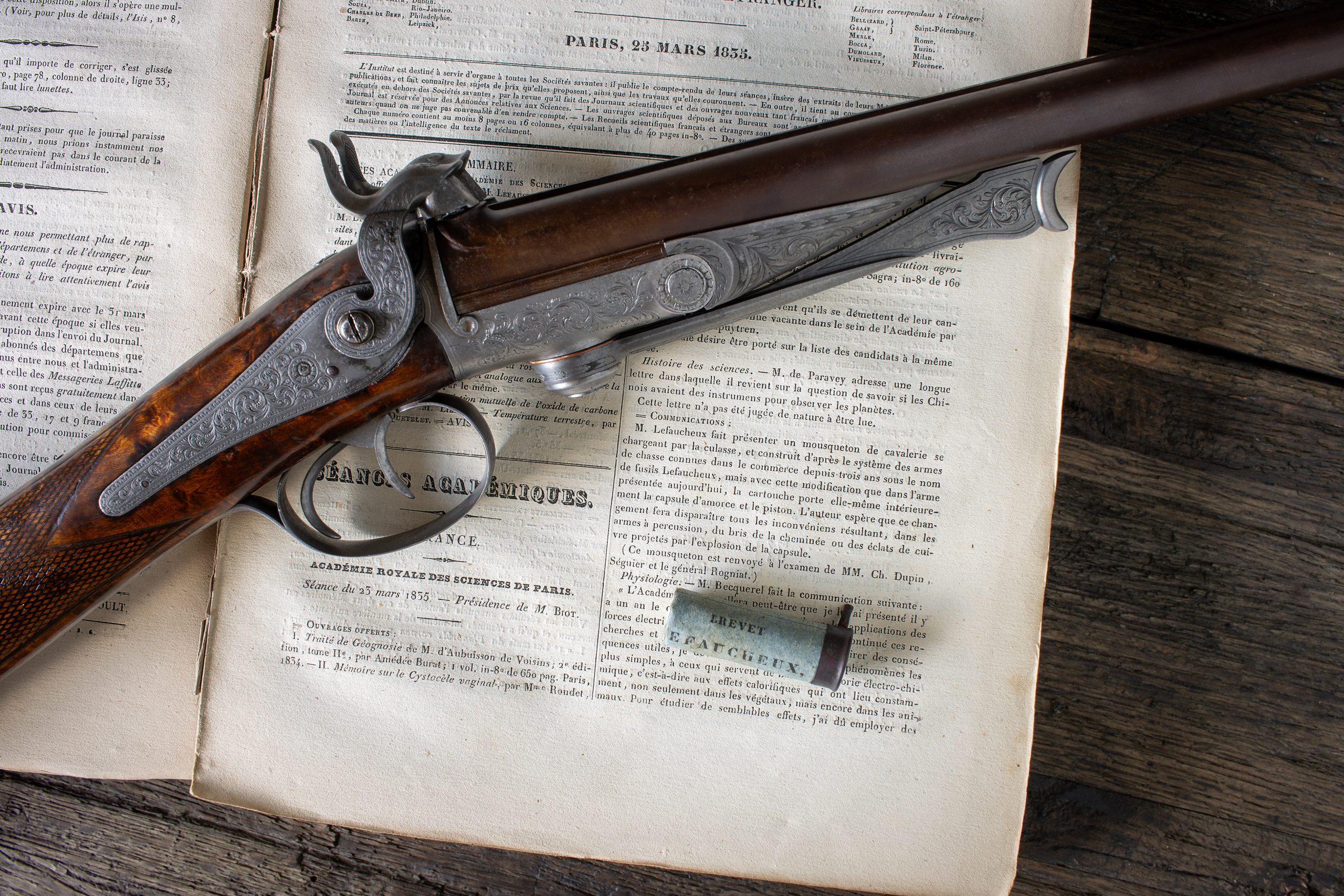
The earliest known printed documentation of Lefaucheux’s pinfire cartridge appeared in the Parisian journal L’Institut almost immediately after the Society meeting. L’Institut, Journal Général des Sociétés et Travaux Scientifiques was a weekly periodical that reported on developments from various scientific societies. In its issue No.98 dated 25 March 1835, the journal published a brief note on Lefaucheux’s invention, marking the first time the pinfire cartridge concept was described in print for the general public. Under the section “Séances Académiques” (Academic Sessions), the journal’s correspondent summarized Lefaucheux’s presentation: “M. Lefaucheux has presented a breech-loading cavalry musketoon, built after the system of hunting arms known in commerce for three years under the name of Lefaucheux guns, but with this modification: in the weapon presented today, the cartridge itself carries internally the primer cap and the piston”. The notice explains that the inventor “hopes that this change will eliminate all the inconveniences” found in percussion arms, such as broken nipples or copper fragments from cap explosions. It also notes that the Académie des Sciences referred the musketoon to a committee (comprising M. Charles Dupin, Baron Séguier, and General Rognat) for examination; essentially the same experts who would validate it through the Society’s trials. This L’Institut announcement is remarkably significant: it predates the official patent publication and wider press coverage, thereby preserving the first contemporary account of the pinfire cartridge in a published journal. The museum’s copy of this issue even retains a handwritten letter that was enclosed with the journal, sent by the editor of the journal to the president of the Académie des Sciences.

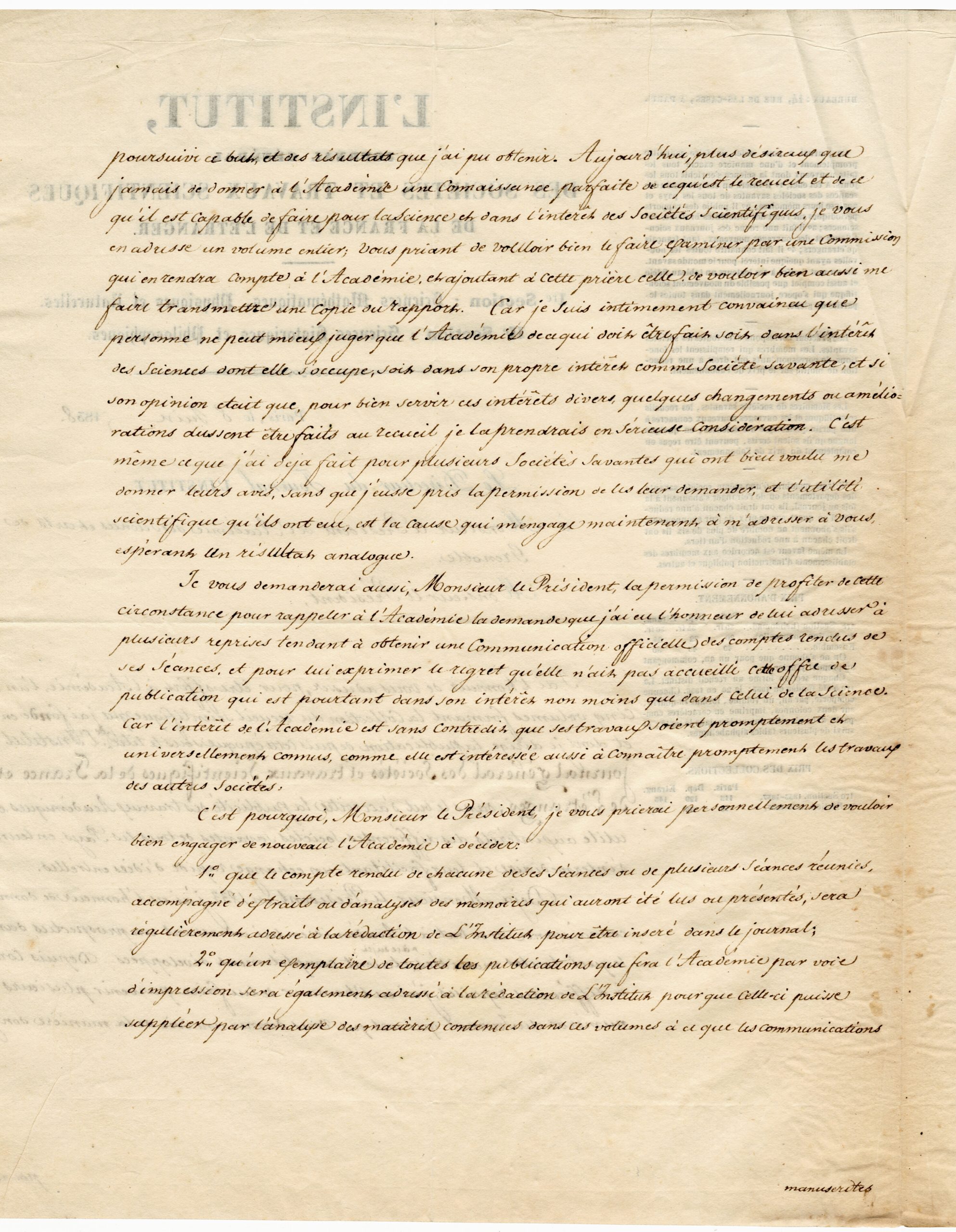
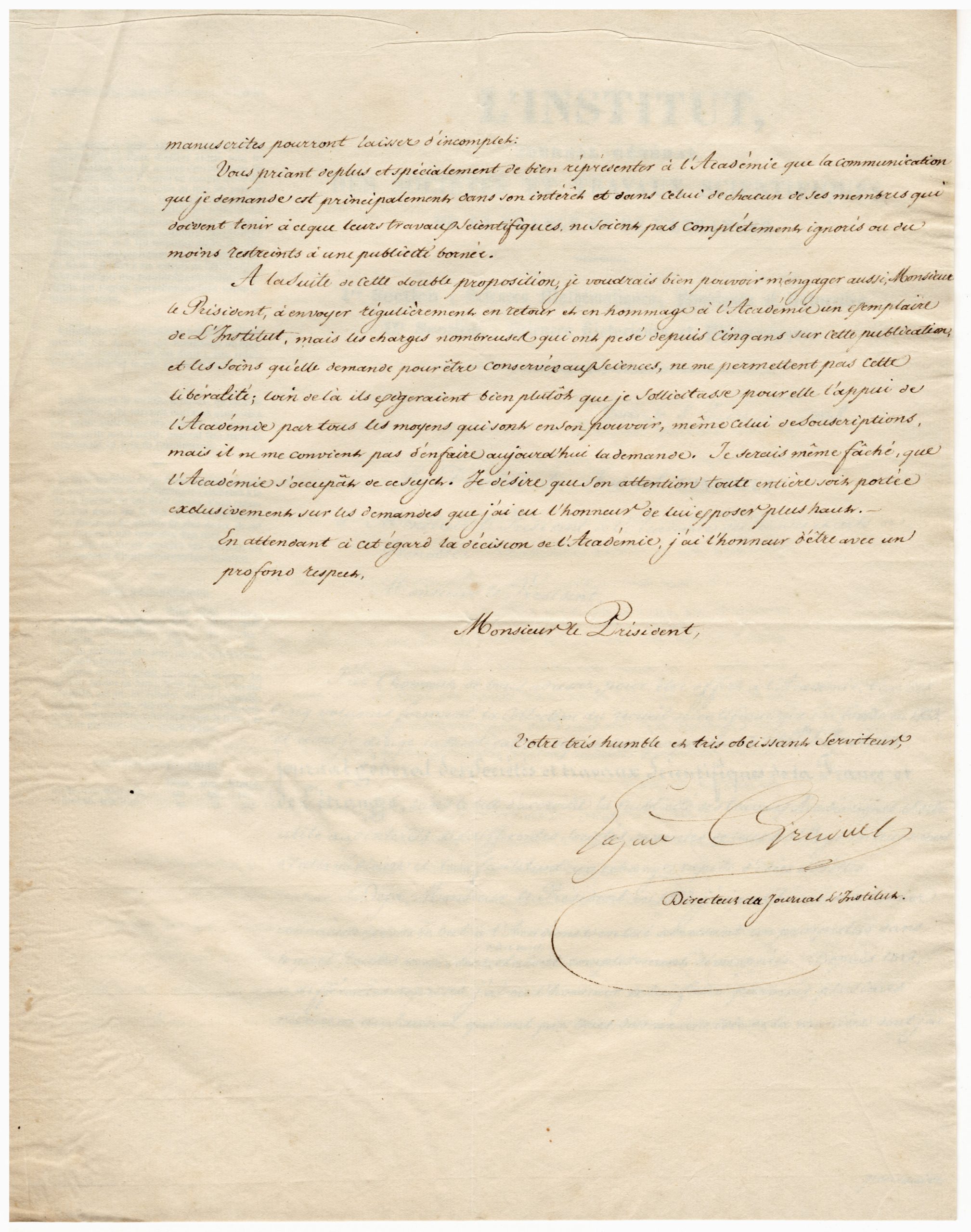

Significance and Legacy of Lefaucheux’s 1835 Invention
Casimir Lefaucheux’s 1835 breech-loader and integrated cartridge represent a foundational advance in firearms history. With this innovation, the era of truly self-contained ammunition began. For the first time, the ignition primer was unified with the projectile and powder in a single cartridge unit; a concept that would revolutionize firearms in the decades to come. Lefaucheux’s pinfire cartridge (so named for its small firing pin) was one of the earliest practical embodiments of this idea. By solving the problems of gas escape and misfires inherent in earlier designs, it dramatically improved the safety, speed, and reliability of breech-loading arms. Historians credit this invention as a direct precursor to later developments. By the 1850s, pinfire cartridges had become widespread in both shotguns and revolvers. The Model 1854 revolver, developed by Casimir Lefaucheux’s son Eugène, was based on this system and was adopted by nearly every major military in the world. The integrated primer concept pioneered by Lefaucheux ultimately led to center-fire cartridges and modern ammunition as we know it.
From a historical perspective, the March 25, 1835 L’Institut notice is invaluable. It captures the first public confirmation of Lefaucheux’s pinfire concept, allowing us to pinpoint the birth of self-contained cartridge firearms in the documentary record. The official patent certificate and the Société d’Encouragement’s detailed report further corroborate the invention’s details and impact, but L’Institut was the medium that immediately communicated this breakthrough to a broader audience of scientists, industrialists, and arms enthusiasts. In the context of 1830s firearms technology, Lefaucheux’s cartridge was years ahead of its time and arrived just as military establishments around Europe were seeking solutions to improve rate of fire and soldier safety. It would still take time (and shifts in conservative mindsets) before breech-loading, cartridge-firing arms were widely adopted, but the foundation was laid in 1835.
For today’s historians and arms collectors, the 1835 documents, including the patent, the Society’s bulletin, and the L’Institut journal, are treasured evidence of Casimir Lefaucheux’s seminal contribution. They capture the moment when a skilled French gunmaker solved a problem that had challenged firearms designers for decades: how to put the fire inside the cartridge. This breakthrough in design marked the beginning of the modern era of firearms and established Lefaucheux’s pinfire cartridge as a key milestone in the evolution of ammunition.

